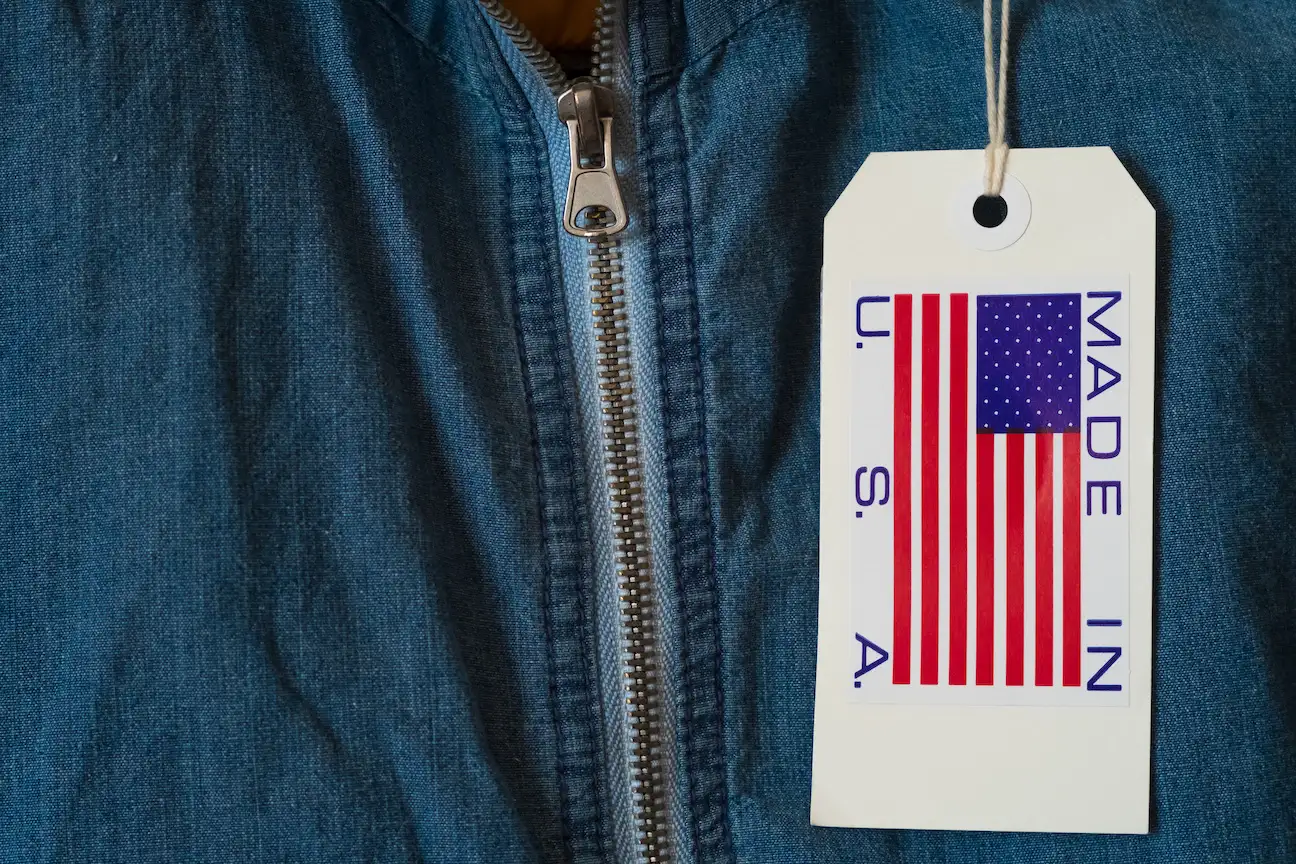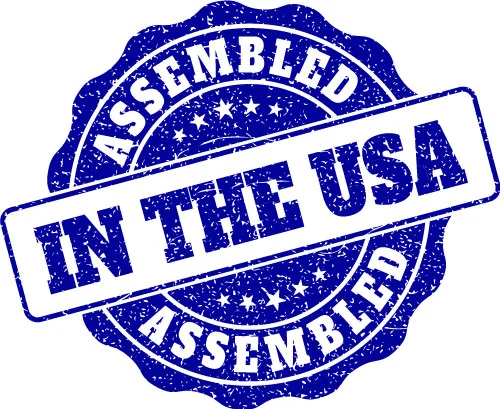What Does ‘Made In USA’ Mean?

Customers who see the ‘Made in USA’ label on a product expect the claim to be truthful and accurate, especially with the increased interest in buying American-made goods. Since the attacks of September 11, news reports suggest consumers have become more sensitive to the ‘Made in USA’ claims and are looking to support local businesses over companies that favor overseas production.
‘Made in America’ policies are designed to increase the use of and reliance on domestic supply chains and ultimately reduce taxpayer dollars spent on importing foreign-made goods. This policy also helps inspire confidence that you are supporting American jobs and industries. Unfortunately, the definition and variations on the phrase can leave consumers feeling confused.
What Is ‘Made in America’?
The Federal Trade Commission (FTC) is responsible for defining the labels ‘made in America’ or ‘made in the USA’ and enforcing that standard. More broadly, the FTC is charged with preventing any deception in marketing and ensuring fairness throughout the United States marketplace. The specific guidelines and rules for claiming a product is “made in America” are outlined in their publication “Complying with the Made in the USA Standard.”
There are two types of American-made product claims: unqualified and qualified. Unqualified refers to any product that claims the product is “all or virtually all” made in the United States. Qualified claims mean the product was made in the US, but the raw materials may not be entirely of domestic origin.
More specifically, a product can only use the ‘Made in the USA’ label if all significant parts, processing, and labor that go into the product are of US origin. Products should not contain any, or negligible, foreign content. More importantly, manufacturers and marketers should not expressly or implicitly indicate that an entire product line is of U.S. origin when only some of those products meet the “all or virtually all” standard.
The FTC holds that a ‘Made in the USA’ claim can be expressed or implied to make matters a bit more complicated. Depending on the context, U.S. symbols or geographic references, such as flags or the outline of the U.S., might convey a claim of U.S. origin. However, the Commission will not consider a manufacturer or marketer’s use of an American brand name or trademark by itself as a proper origin claim. It will also not consider a package label using an American address as proof of a product’s origins.
How Is It Regulated?
The FTC evaluates ‘Made in the USA’ claims in product advertising, labeling, and packaging. For most products, with the exception of automobiles, textiles, or wool products, there are no laws requiring manufacturers to make a “Made in USA” claim. If the business chooses to make the claim, they need to comply with the FTC’s standard.
It is also important to note that the FTC does not pre-approve advertising or labeling claims. A company does not need approval from the Commission before making the claim. Like most other advertising claims, a manufacturer or marketer may make any claim as long as it is truthful. However, if a claim is reported as false, the FTC may step in.
This policy applies to all products advertised or sold in the United States, except those expressly subject to country-of-origin labeling by other laws, such as the Textile Fiber Products Identification Act and Wool Products Labeling Act. Other countries may also have their country-of-origin marking requirements, so businesses and consumers need to be aware of that, especially if buying exported American products abroad.
What Claims Does The Enforcement Policy Statement Apply To?
The FTC’s Enforcement Policy Statement applies to all U.S. origin claims that appear on products and labeling, advertising, and other promotional materials. It also applies to other forms of marketing, including digital, such as online ads or emails.
Textiles
Textiles and wool fall under a different standard. Under the Textile and Wool Acts, products must be labeled with the country where they were processed or manufactured. Imported goods will list the country of origin, while products made entirely of US materials must be labeled with ‘Made in the USA’ or an equivalent phrase.
For goods made of imported materials but processed within the United States, the manufacturer must disclose that the processing happened within the US, but the materials are foreign imports. Finally, any products manufactured partially in the US and partially outside the US must show that on the label.
Automobiles
Under the American Automobile Labeling, every vehicle manufactured on or after October 1, 1994, and for sale within the US must bear a label clearly disclosing where the car was assembled, the percentage of equipment that originated in the US or Canada, and the country of origin for the engine and transmission.

Assembled Or Built In America
It is not uncommon to see certain products labeled ‘Assembled in America’ or ‘Built in America.’ These are not the same as ‘Made in the USA’ claims. These labels mean the product is made of parts and materials imported to the United States and assembled into the final product.
The FTC still regulates this, however, and their definition requires that items are “substantially transformed” on US soil. In other words, the parts and materials have been sufficiently altered to change their intended use or functionality, such as if a company imports leather that is later transformed into a pair of shoes.
How Far Back Do Manufacturers And Marketers Look Into the Manufacturing Process?
According to FTC guidelines, manufacturers and marketers should look back far enough in the manufacturing process to be “reasonably sure” that any significant foreign content has been included in their assessment of foreign costs. It is up to the company to determine whether foreign content incorporated early in the manufacturing process will matter to consumers.
Raw materials are also included as part of this evaluation. Whether a product can be labeled ‘Made in the USA’ depends on how much of the product’s cost is made up of imported raw materials and how removed these raw materials are from the finished product.
How to Know Where A Product Was Made
Recently, viral images and videos on social media claim that barcode prefixes can identify where a particular product was made. These claims assert that any product barcodes beginning with 690, 691, or 692 are made in China, while barcodes starting with 00 through 09 are made in the US. According to Reuters, this claim is only partly false. Barcodes can identify a country of origin for the manufacturing company, but they do not indicate where the product is made. These barcodes are assigned by GS1, a nonprofit organization that assigns unique numbers to products.
The easiest way to know is to check the product for any identifying labels and assess their claims based on their wording. Remember, ‘Made in America’ differs from ‘Made in the USA’. The key part is that USA is specified. Otherwise, a product may also be manufactured in Canada or Mexico. Check for words such as ‘made’ or ‘assembled.’ Typically, ‘made’ includes raw materials and processing, while ‘assembled’ means a company’s production is U.S.-based, while they import the raw materials.
Companies may also add modifiers to their ‘made in the USA’ claims because they cannot fully justify only saying ‘made in the USA.’ This tells the consumer that a good portion of the production process is likely performed elsewhere, whether that is the labor or the creation of the materials used.
Another important tip is to find the country of origin on the company’s website, product packaging, or other materials. This information can usually be found on product labels, such as the price tag, near the barcode, or any other tag, such as on a piece of clothing. Online retailers like Amazon also have a spot under Product Information, where manufacturers can explicitly state where their products are made. The FAQs below this description are another great place to see if anyone has asked for this information and gotten an answer.
Company websites can sometimes make it more difficult, but there are a few places you can check. ‘About’ or ‘company story’ pages are great starting points. Companies that genuinely source and manufacture their products in the United States typically do not hesitate to say so outright. These pages may also include lists of specific products produced in the United States, a list of employees, U.S. office locations, or images and videos of their manufacturing facilities.
If you’re shopping on their online store, check the individual product pages. Companies typically list the product’s country of origin in sections such as description, specs, or FAQs.
Unfortunately, many companies are not clear on where their products are made. If you are determined to determine whether a product is made in the U.S., a call or email to the company’s customer support might give you some insight.
How To Spot A False Claim
Rooting out fakes can be difficult, primarily because of the somewhat vague FTC guidelines. Here are a few signs you can look out for if you suspect the claim might be fake.
Country of Origin: This must be posted somewhere easily visible on any product that originates outside of the USA. If the country of origin is not listed as the United States, the product is not American-made.
Flag Stickers: These are often used to confuse consumers. A flag sticker or large USA label does not indicate that the product is made in the US.
Spelling or grammar mistakes: Any mistakes in spelling or grammar might indicate foreign manufacture because non-English-speaking workers may miss this during the process.
Made in America: As stated above, while this could mean made in the US, ‘America’ encompasses Canada and Mexico.
Why Buying American Matters
Several presidential administrations have issued acts encouraging Americans to buy US-made goods in recent years. These acts also impose rules on government agencies to increasingly buy American-made products instead of imports.
United States citizens of all backgrounds are calling for an increase in buying American-made products. Supporters of buying American argue that products made in the US need to adhere to specific quality standards and create more jobs nationwide.
Legitimate ‘Made in the USA’ labels can also evoke a sense of national pride. Throughout the nation’s history, the decline of the US manufacturing sector and its detrimental effect on employment in the country led to increased sensitivity and high levels of emotions surrounding this topic. This has also led to labels reading ‘Made in China’ or other countries to become associated with the decline of the middle class, lower safety and quality standards, and substandard working conditions.
Next time you consider buying a product, look for the official ‘Made in the USA’ label. Feel good knowing you are supporting US industries, jobs, and local workers throughout the nation and the economy.
